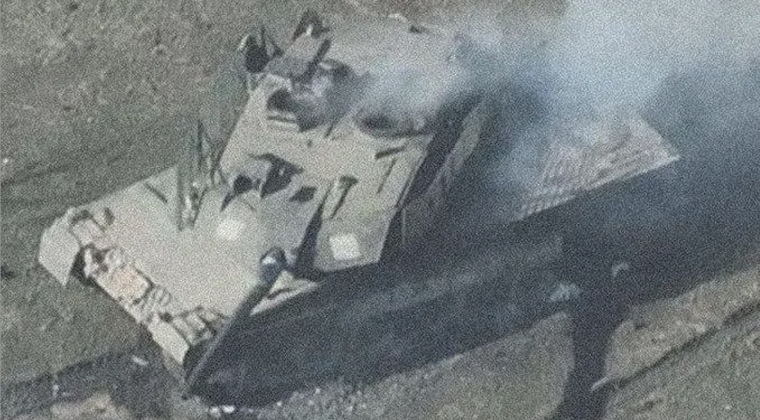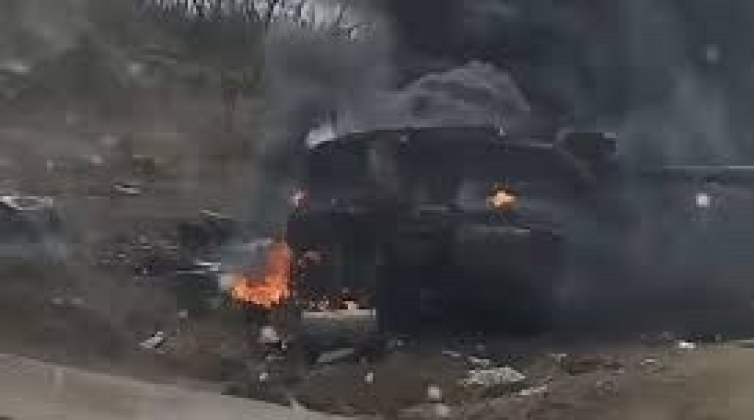News
Russia Has Taken Out the Majority of Ukraine’s German Leopard 2 Tanks: Abrams Tanks Kept Far From Any Combat
The majority of German built Leopard 2 tanks operated by the Ukrainian Army have been rendered inoperable in combat with Russian forces, with over one quarter totally destroyed and the remainder damaged beyond the Army’s ability to repair them. Foreign Affairs, the journal of the United States’ most influential foreign policy think tank the Council on Foreign Relations, highlighted that the tanks had proven to be “hardly invulnerable superweapons.” “Of the fewer than 100 Leopard 2s in Ukrainian service, at least 26 have been knocked out; others cannot be used due to repair and maintenance issues,” the assessment added, highlighting that the performance of Ukrainian forces offered “little evidence that better tanks would have been decisive.” While Leopard 2s were supplied by multiple European states, Foreign Affairs added that M1 Abrams tanks supplied by the United States had been held back far from the frontlines, which it explained by noting that the Ukrainian Army was “up-armouring them to resist attacks by Russia’s explosive-laden first-person-view drones.” It has been widely speculated that after delaying deliveries until after Ukraine’s summer offensives lost steam, Washington has also sought to ensure that the Abrams will not be deployed for high intensity combat as the Leopard was in order to avoid reputational damage to its defence sector from the loss of one of its most iconic products.

A reference by Foreign Affairs to Ukraine’s lack of the necessary support infrastructure to maintain its fleet follows a report earlier in the month by a parliamentarian from Germany’s ruling Green Party, Sebastian Schafer, that only a fraction of Leopard 2A6 tanks, the most capable variants delivered, were available for service. “Unfortunately, it has to be noted that only a very small number of the battle tanks delivered can now be used by Ukraine,” he observed at the time. Previously in November Forbes had reported that the Ukrainian Army had already lost “a quarter of its best German-made tanks.” The Leopard 2 was long expected to take very heavy losses against Russian forces based on the class’ prior performance when deployed by the Turkish Army against Islamic State and Kurdish insurgents in Syria and Iraq. Senior Turkish officers at the time referred to their forces as experiencing “trauma” due to the extreme losses taken against relatively lightly armed militias.

The Leopard 2A6 was first seen taking multiple losses in Ukraine in early June just days after it was confirmed to be participating in offensives against Russian positions. Footage of Russian forces capturing abandoned American and German built armour first emerged at around that time, with more having emerged since on multiple occasions. Footage has since shown the destruction of Leopard 2s on multiple occasions, with successful kills gained using a range of weapons from mines and man-portable Kornet missiles to new Vikr-1 missiles launched by Russian attack helicopters. Alongside the Leopard 2, and much greater losses affecting ageing Leopard 1 units, the British Challenger 2 tank also saw two of the twelve vehicles supplied destroyed by Russian forces during the class’ very brief deployment near the frontlines in August. Beyond issues with their armour protection levels and maintenance needs, Leopard tanks have also fared poorly in Ukraine’s winter mud – an issue their predecessors famously faced in the Second World War. Russian T-80 tanks with gas turbine engines, the same engine type used by the American M1 Abrams, have proven much more capable of operating in such terrain. Western sources have notably widely sought to downplay claims that German tank designs suffer from performance issues and lack survivability, frequently claiming that Ukrainian forces’ tactics and their inability to adopt NATO standard methods of operation were the primary cause for the losses suffered.












